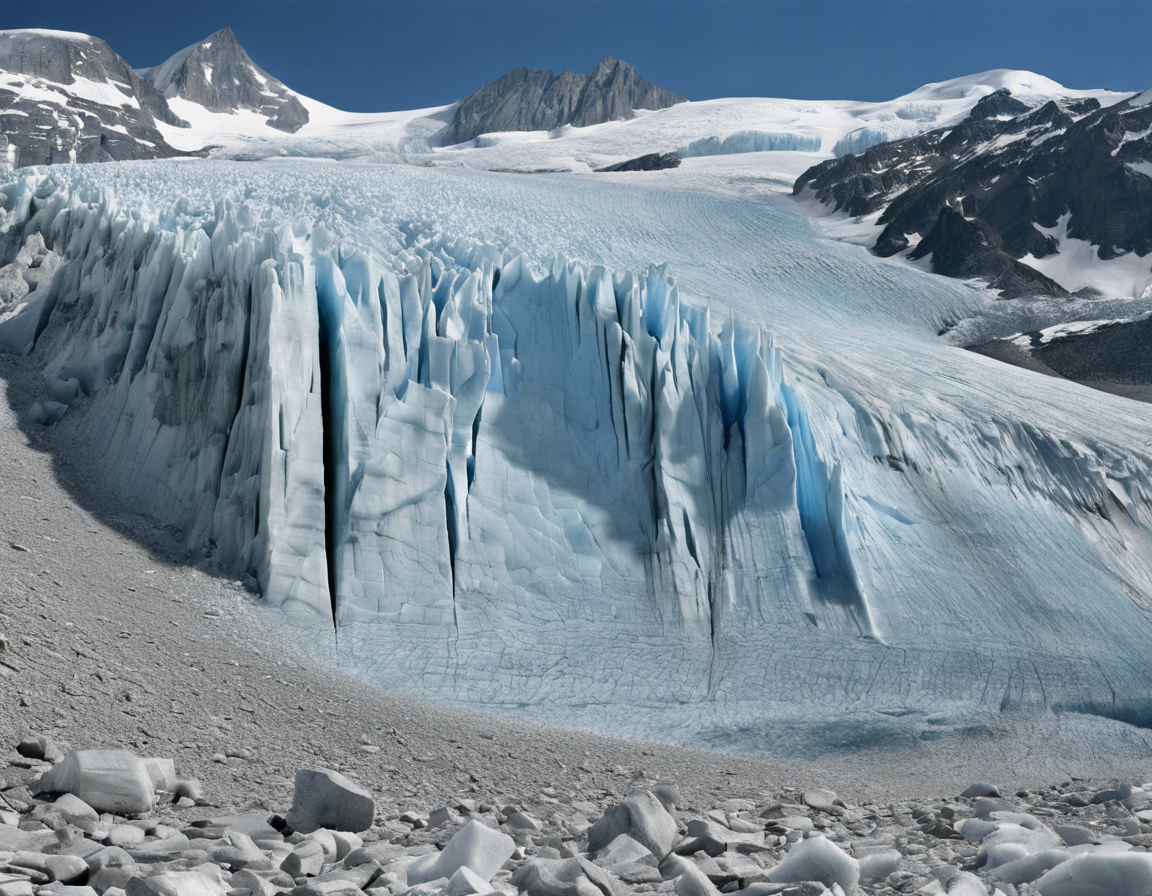Glaciers are dynamic bodies of ice that shape the Earth’s landscape through a variety of processes, including erosion, transportation, and deposition. While much attention is paid to the erosional features of glaciers, such as cirques, aretes, and U-shaped valleys, their depositional features are equally important in understanding past and present glacial environments. In this article, we will delve into the deposition of sediments by glaciers, exploring the various landforms and sediment types that glaciers leave behind.
Glacial Deposition
Glacial deposition occurs when a glacier deposits the material it has previously eroded and transported. The deposited material can vary widely in size, from fine clay particles to large boulders. The type of material left behind by a glacier depends on factors such as the glacier’s size, speed, and the nature of the underlying bedrock. There are two main types of glacial deposits: till and outwash.
Till Deposits
Till is an unsorted mixture of sediment deposited directly by the ice. It can range in size from clay to boulders and is typically unstratified. Till is often deposited as the glacier melts or retreats, leaving behind a jumble of different-sized particles. This type of deposit is known as moraine, which can be further classified based on its position relative to the glacier: terminal moraine is deposited at the furthest extent of the glacier, lateral moraine forms along the sides of the glacier, and medial moraine results from the merging of two glaciers.
Outwash Deposits
Outwash deposits are sorted by size and are typically found in areas where meltwater from the glacier has carried sediment away. As the meltwater flows, it sorts the sediment by size, with larger particles being deposited closer to the glacier and finer particles being carried further away. Kettle lakes, eskers, and kames are common landforms associated with outwash deposits.
Landforms Resulting from Glacial Deposition
-
Drumlins: These elongated hills are made of till and often form in clusters. They are shaped like inverted spoons, with the blunt end facing the direction from which the ice advanced.
-
Kettles: Kettles are depressions in the landscape formed by blocks of ice left behind by a retreating glacier. When the ice melts, it creates a hole that may fill with water, forming a kettle lake.
-
Eskers: Eskers are long, winding ridges of sand and gravel deposited by rivers flowing within or beneath a glacier. They often form in tunnels at the base of the ice.
-
Kames: Kames are small, cone-shaped hills of sediment that accumulate in depressions on the glacier’s surface. They are typically composed of sand and gravel.
-
Erratics: Erratics are large boulders that have been transported by a glacier and deposited in an area composed of different bedrock. These boulders can provide clues about the glacier’s path and the geology of the region.
Sediment Types in Glacial Deposits
Glaciers can transport a wide variety of sediment types, including:
- Rock Flour: Fine particles of rock ground up by the glacier’s movement.
- Sand and Gravel: Coarser particles that are often found in outwash deposits.
- Boulders and Erratics: Large rocks and boulders that may be scattered across the landscape.
- Till: The unsorted mixture of sediment directly deposited by the glacier.
FAQ
1. What is the difference between till and outwash deposits?
Till is unsorted sediment deposited directly by the ice, while outwash is sorted by meltwater flowing from the glacier.
2. How do drumlins form?
Drumlins form from the deposition of till by a moving glacier, with the blunt end facing the direction of ice flow.
3. What role do moraines play in glacial deposition?
Moraines are ridges of till left behind by glaciers and can help geologists reconstruct past glacial movements.
4. Are glacial deposits only found in polar regions?
No, glacial deposits can be found in regions that have experienced past glaciation, including parts of North America and Europe.
5. How do eskers differ from drumlins?
Eskers are long, winding ridges of sediment deposited by streams within or beneath a glacier, while drumlins are elongated hills of till.
Understanding the depositional features of glaciers is crucial for reconstructing past glacial environments and interpreting the geological history of a region. By studying the landforms and sediment types left behind by glaciers, scientists can gain valuable insights into Earth’s climate history and the processes that shape our planet.
